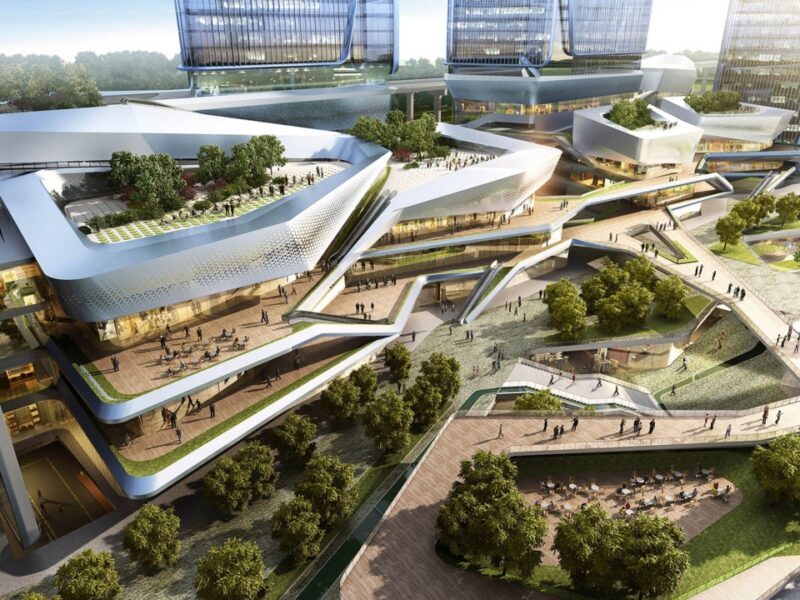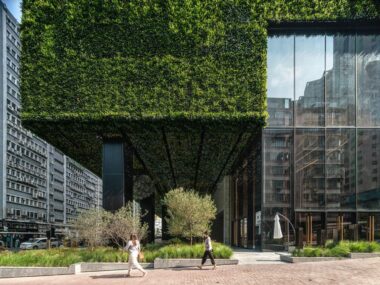Urban Planning Strategies for Mixed-Use Developments: Creating Livable Neighborhoods for All
Introduction:
In the realm of urban development, the concept of mixed-use developments has emerged as a compelling solution to the complexities of modern city living. As populations grow and urban areas expand, the traditional model of segregated land uses is increasingly giving way to more integrated approaches that prioritize efficiency, connectivity, and livability. At the heart of this evolution lies the aspiration to create neighborhoods that cater to the diverse needs of residents, offering not only places to live but also opportunities to work, shop, socialize, and play—all within close proximity.
Urban planning strategies for mixed-use developments are crucial for fostering livable neighborhoods that cater to the diverse needs of residents. By integrating various land uses such as residential, commercial, recreational, and cultural within close proximity, mixed-use developments aim to create vibrant, walkable, and sustainable communities accessible to all.
In this context, urban planning strategies for mixed-use developments have taken on newfound importance, serving as blueprints for the creation of dynamic, inclusive, and sustainable communities. By blending residential, commercial, recreational, and cultural uses within a single neighborhood or district, mixed-use developments seek to foster vibrant urban environments where residents can enjoy a high quality of life, with access to amenities, services, and opportunities for social interaction right at their doorstep.
However, realizing the full potential of mixed-use developments requires careful planning, innovative design, and proactive engagement with stakeholders. From transit-oriented design and pedestrian-friendly infrastructure to affordable housing initiatives and green spaces, a holistic approach is needed to create neighborhoods that are not only aesthetically pleasing but also functional, resilient, and equitable.
READ ALSO: GOLDEN APPLE SCHOLARS
In this exploration of urban planning strategies for mixed-use developments, we delve into the principles, practices, and policies that underpin the creation of livable neighborhoods for all. By examining successful case studies, emerging trends, and best practices from around the world, we aim to shed light on the transformative potential of mixed-use development as a catalyst for positive change in our cities. From enhancing mobility and accessibility to promoting social inclusion and environmental sustainability, mixed-use developments offer a compelling vision for the future of urban living—one where diversity, connectivity, and community are celebrated and embraced.
- Transit-Oriented Design: Emphasizing transit-oriented design encourages the development of mixed-use projects around public transportation hubs. This approach reduces dependency on cars, promotes walking and cycling, and enhances connectivity within the neighborhood and with surrounding areas.
- Pedestrian-Friendly Infrastructure: Designing streets and sidewalks with pedestrian safety and comfort in mind is essential for creating walkable neighborhoods. Implementing features such as wide sidewalks, tree-lined streets, pedestrian crossings, and traffic-calming measures enhances the pedestrian experience and encourages active lifestyles.
- Affordable Housing: Integrating affordable housing units within mixed-use developments ensures socioeconomic diversity and promotes inclusive communities. Implementing inclusionary zoning policies or offering incentives to developers for including affordable housing units can help address housing affordability challenges and prevent displacement of low-income residents.
- Public Spaces and Green Infrastructure: Incorporating public parks, plazas, and green spaces within mixed-use developments provides residents with opportunities for recreation, social interaction, and relaxation. Green infrastructure elements such as rain gardens, permeable pavements, and urban forests help manage stormwater runoff, mitigate heat island effects, and improve air quality.
- Mixed-Use Zoning and Design Standards: Adopting flexible zoning regulations and design standards that encourage mixed-use development promotes diverse land uses and fosters vibrant streetscapes. This approach allows for a mix of residential, commercial, and recreational uses within the same building or block, enhancing convenience and reducing the need for long commutes.
- Community Engagement and Participation: Engaging residents, businesses, and community stakeholders in the planning and design process fosters a sense of ownership and ensures that development projects align with the needs and preferences of the local community. Incorporating feedback through public meetings, workshops, and surveys helps create more responsive and inclusive mixed-use developments.
- Sustainability and Resilience: Integrating sustainable design principles and resilient infrastructure into mixed-use developments promotes environmental stewardship and climate resilience. Incorporating energy-efficient buildings, renewable energy systems, green roofs, and resilient landscaping techniques helps reduce carbon emissions, conserve resources, and enhance the resilience of neighborhoods to climate change impacts.
By implementing these urban planning strategies, mixed-use developments can create livable neighborhoods that prioritize accessibility, affordability, sustainability, and inclusivity, fostering thriving communities where residents of all backgrounds can live, work, and thrive.
Conclusion:
The pursuit of mixed-use developments represents a paradigm shift in urban planning—a shift from the conventional model of segregated land uses toward a more integrated and holistic approach to city building. Through the strategic blending of residential, commercial, recreational, and cultural elements, mixed-use developments have the potential to redefine the urban landscape, creating vibrant, resilient, and inclusive neighborhoods that meet the diverse needs of residents.
As we have explored, the success of mixed-use developments hinges on a multifaceted approach that encompasses transit-oriented design, pedestrian-friendly infrastructure, affordable housing initiatives, green spaces, and community engagement. By embracing these urban planning strategies, cities can unlock a host of benefits, from improved mobility and reduced carbon emissions to enhanced social cohesion and economic vitality.
Moreover, mixed-use developments hold promise as engines of innovation and creativity, incubating dynamic urban ecosystems where ideas are exchanged, businesses thrive, and cultures converge. By fostering a sense of place and belonging, mixed-use developments contribute to the fabric of urban life, enriching the lived experience of residents and visitors alike.
Looking ahead, the imperative to prioritize mixed-use developments has never been greater. As urban populations continue to swell and resources become increasingly scarce, the need for sustainable, equitable, and resilient urban solutions becomes ever more urgent. By embracing the principles of mixed-use development, cities can chart a course toward a more inclusive and sustainable future—one where the built environment serves as a catalyst for social progress, economic prosperity, and environmental stewardship.
In closing, let us recognize the transformative power of mixed-use developments to shape the cities of tomorrow. By harnessing the collective wisdom of urban planners, architects, policymakers, and community members, we can create neighborhoods that are not only livable but also thriving, inspiring, and enduring. Together, let us build the cities of our dreams—one mixed-use development at a time.

